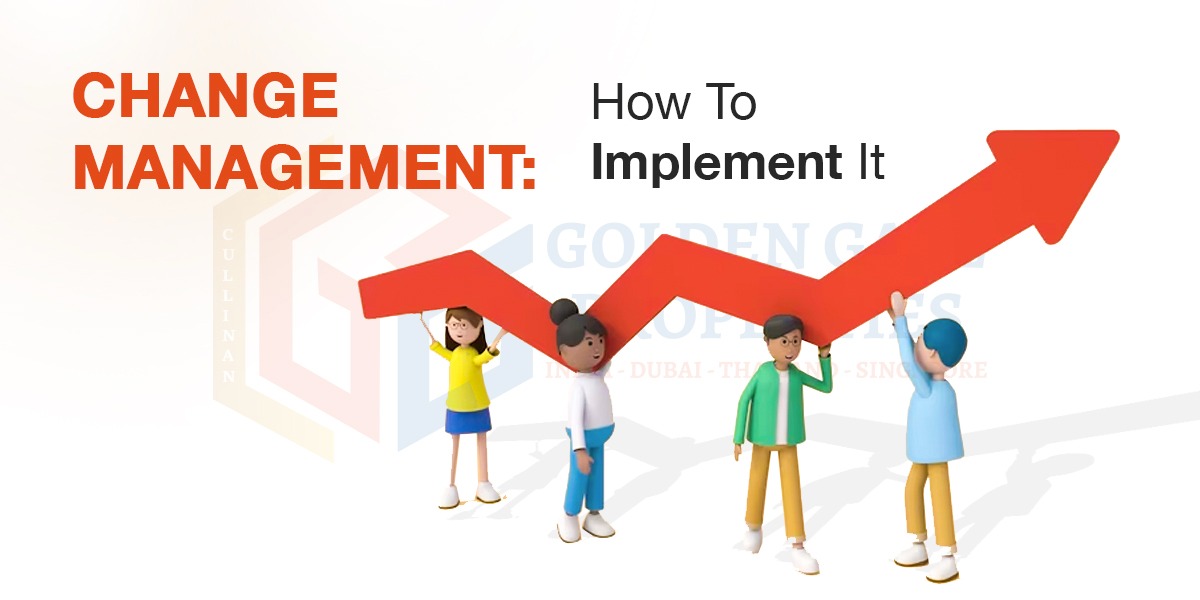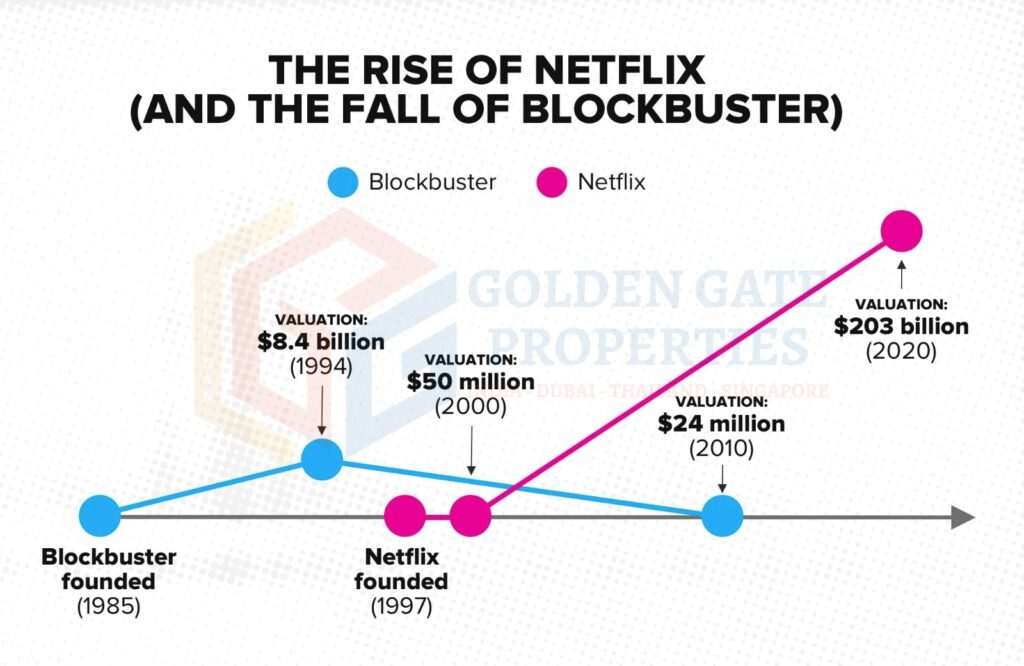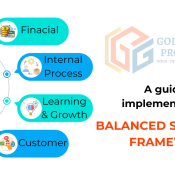
Change Management: How To Implement It
What Is a Change Management Strategy?
A change management strategy is the reaction plan that an organisation will employ to address change.
It is a method designed to mitigate the negative consequences of altering events while capitalising on the transition.
Okay, this seems fine in theory, but what exactly is it?
In a nutshell, it’s a ‘better safe than sorry’ attitude that organisations may take when change occurs (and trust us… it ALWAYS occurs!).
You may accomplish this in a variety of ways, and there are several models to assist and guide you through the process.
We’re not attempting to reinvent the wheel (see what we did there? ), but we will provide you with two things: a strong guideline on what a change management strategy is and how you may use it in your organisation.
Why You Need Change Management Strategies
With a change management plan in place, you can better anticipate how change(s) may influence your organisation.
Benjamin Franklin famously wrote “Nothing can be certain but death and taxes” which is true to this day. The change will happen, so you may as well be ready.
Even when you think you are a massive, untouchable organization, change can undermine you really fast if you don’t have a strategy for it.
Remember Blockbuster?

Blockbuster failed to recognise the potential of streaming services and the implications for their company. As a result, they lost market share to competitors and were forced to declare bankruptcy. This is a cautionary story on the necessity of change adaptation.
Probably the best example of a bad change management strategy.
Types Of Change Management Strategies
There are three main types of change management strategies: developmental, transitional, and transformational change. Each of these strategies serves a different purpose and can be used to achieve different goals.
Developmental Change
Developmental change is an incremental change management strategy that focuses on improving an existing process, product, or service. This approach involves making minor adjustments to improve efficiency or effectiveness.
Examples:
- Upgraded software to improve functionality.
- Implementation of a new training program to improve employee skills.
- Implementation of minor changes to a product to increase sales.
Transitional Change
This type of change management strategy is focused on moving from one state to another. It’s more significant than developmental change and often involves a shift in processes, structures, or systems. The purpose of the transitional change is to prepare the organization or business for the future state.
Examples:
- Introduction of a new product line or services.
- The movement to a new location.
Transformational Change
Transformational change involves a complete overhaul of an organization’s processes, culture, and strategy. This approach can be disruptive but can lead to long-term benefits. The purpose of transformational change is to fundamentally change the organization or business and its way of operating.
Examples:
- New business model or strategy.
- Mergers and acquisitions.
- Implementation of a new technology or digital transformation.
Key Steps In A Change Management Strategy
As mentioned before, this is not a NEW approach to creating an effective change management strategy, as there are plenty out there.
Below you’ll find a few key elements to consider along the way when building your very own strategy.
1. Create an execution-ready plan
Being creators of Strategy, Execution & Implementation. we know that planning is a big deal. Before introducing any change or even announcing it, you need to have a clear idea about what you want to achieve and how you’re going to introduce it among your employees.
Document the changes and things to do to achieve them, craft a detailed timeline, and have a clear response to the potential concerns of your staff.
How GGP can help:
With GGP, you can create an effective change management strategy independent from the main corporate strategic plan and then use dependencies to link back certain key focus areas as needed.
Recommended reading: The Operational Strategy: Making It Work For Your Organization
2. Ensure transparency
It makes total sense, particularly in larger organizations, to keep things relatively quiet when change lurks in the background… Not everyone is comfortable with it, and it can create a feeling of uncertainty, so initially, it can help to keep the conversation within top management.
Having said this, failing to announce change can make it very difficult to encourage the wider team to embrace the transformation. They’ll start to make up their minds on how the change will affect them based on their fragmented perception.
This is why communication will be integral to the planning stage. This way you can announce the change and promote discussion rather than being on the back foot with rumours lurking…
You never want to be in a position where you need to ‘sugarcoat’ facts or be overly optimistic, as this will usually result in more confusion, mixed messages, and suspicion.
If there are short-term negative outcomes because of the transformation, discuss them. Embrace and acknowledge the potential drawbacks and encourage a conversation with the wider team.
Transparency will win in most situations and will ultimately lift everyone’s confidence that the right decisions are being made.
3. Prioritize communication
This is an obvious one and with good reason. It’s really important to communicate the entire process well.
Communicating that ‘change is coming’ is not enough. You need to explain WHY the change is important and what benefits the organization expects from it (as well as any setbacks – don’t try to dodge tough questions around the change).
Be open to questions and suggestions, and hold OPEN team meetings to discuss the changes so that there is a clear understanding from everyone about what’s changing when it’s changing, and how that will affect them (if at all).
????Recommended reading: The 8 Steps to a Successful Internal Communications Strategy
4. Involve key stakeholders in the process
We’ll talk a little more about who needs to be involved in the change management strategy development later on, but this is a key element in general throughout the process.
Those who will be affected (or people representing them), should be involved so that they can help shape the change. Even if the way forward is not the one they would necessarily choose, having their involvement will go a long way toward getting buy-in and support.
The reality is that this applies to ANY type of change, in ANY situation. You’d be surprised to see how many large organizations waste time and resources in their change initiatives simply because they fail to involve the right people in the process.
5. Build a roadmap
This is a key element, particularly in larger organizations, as it helps the wider team not only recognize the current situation (sometimes they may not be as aware of the challenges or need for a change), but also get a good sense of what the next steps and the final destination are.
This will also solidify the process for the management team and ensure that there are no gaps moving forward.
How GGP can help:
GGP provides different ways for you to visualize your strategic plan.
Recommended reading: Understanding of real estate’s potential for investment.
6. Train your organization
This may be more appropriate for certain scenarios. If you are looking to introduce a new project, for example, it makes sense to set up a training process.
Announce that the training will be available and ensure that the process caters to the level of knowledge and experience within a team.
Don’t make assumptions or expectations for the training to magically transform the organization, as this is only part of the process and we all learn new things at differing speeds. Maybe you need to revisit the training periodically.
????Recommended reading: Building a people-centred strategy.
7. Propose incentives
This one is not a must-have, but again in larger organizations, it could help. Introducing some incentives through the process of change can be beneficial and encourage team members to engage with the new plan ahead, increasing agility.
This doesn’t necessarily refer to monetary incentives. There are many ways to encourage team members, and studies have shown time and time again that money is not the ultimate incentive for many.
????Recommended reading: How To Set Team Goals In The Right Way
Scenario-based Elements
Depending on the type of change you are driving, there may be significant shifts at the core of the organizational strategic plan, so the steps below could be appropriate to your change management strategy.
Redefine vision
When an organization is pivoting dramatically, it may be necessary to revisit the core vision (the “why”) to ensure that it aligns with the proposed change.
This is the least common scenario given that typically an organization sticks to a core vision from inception, but it’s not unheard of.
Apple is a poster child for this. When Steve Jobs stepped back into the lead role (after previously being asked to leave), the company’s approach changed dramatically, and the vision was cleverly redefined, even through their marketing.
Redefine organizational values
This particularly applies to older organizations that may have to update their values to reflect what the market is focused on, or as a way to differentiate themselves from competitors (banks can be a great example of this).
Organizational values can also encourage certain talent to join the organization, so this can also sometimes be a push for change.
Another example would be when there is a merger between organizations and their organizational values need to be amalgamated.
Employees would be ready to adapt and fit in with the organizational values. So, introduce a change in the cultural values of the organization and make it a culture of continuous improvement. The employees may respond positively to a new way of working if you introduce the new organizational value of continuous improvement.
Redefine organizational focus areas
Focus areas are more common in the change management process since this can often be the source of the change.
The shift in organizational focus areas will often dictate the level of change management required and set the pace therein. This will then have a domino effect on the organizational goals.
Who Develops A Change Management Strategy Process?
As a general rule of thumb, change management starts at the top. This is a very broad response though, since in reality ‘the top’ might not necessarily refer to senior management.
The kind of change will determine who is involved in the strategy. As an example, if the change is significant across the organization, then it makes sense for senior management to be leading the change management strategy.
If the change is within a business function though, the strategy could be developed further down.
Let’s say the design department is moving to a new suite of design software. Senior management would not need involvement and the head of the team + their supervisor might suffice. They would also want IT involved and maybe even HR for training.
3 Tips To Ensure A Smooth Transition For Employees
Any amount of change can be stressful for employees and, when not properly handled, can be met with resistance. If you initiate change but fail to follow it through, team members can feel frustrated with the lack of direction and feedback.
Even when the change will benefit them in the long run, the knee-jerk reaction of any employee is to resist it. After all, doing things the same way is more comfortable than pursuing change.
Here are three tips to help you smoothly transition employees and ensure they don’t experience organizational burnout.
1. Encourage employees to share their insights and opinions
During a transition, it’s common for employees to feel anxious or uncertain about what’s going on. Encouraging them to share their insights and opinions can help them feel more engaged in the change management process and give them a sense of ownership over the transition. Remember, you hired highly qualified people to do the job, so their opinion also matters.
Employees can voice their feedback through various channels, such as town hall meetings, one-on-one meetings, or online forums. By giving employees a voice and listening to them, you can also identify potential problems or roadblocks before they become bigger issues.
2. Reward employees for their commitment to change
Change can be difficult, and it’s important to recognize and reward employees who are committed to making it work. This can be done through various ways, such as bonuses, promotions, or simply acknowledging their hard work and dedication.
By showing employees that their efforts are valued and appreciated, you can also help to maintain morale and motivation during the transition. This will also encourage employees to help each other during the transition leading to a successful change management strategy.
3. Celebrate successes
Change management involves celebrating milestones and successes during the transition process. This can help to build momentum and keep team members motivated. Celebrations can be as simple as a team lunch or as elaborate as an awards ceremony.
When you celebrate successes, you are reinforcing the importance of change initiatives and the positive impact it’s having on the organization. This will help team members keep going even when the change initiatives are challenging.
How To Measure Your Change Management Strategy
Measuring the results of the strategy you take around change management will heavily depend on the type of organization you are.
GOLDEN GATE PROPERTIES is a strategy execution platform that can help you implement and measure the effectiveness of your change initiatives in a painless and efficient manner.
Management Strategy With GGP ????
Change is a big thing, whatever your organization’s size or business. So don’t expect people to want change overnight (this is where the old saying “a change is as good as a holiday” doesn’t apply!).
You have to help them (and yourself) prepare for the change and to deal with it. Ensuring their participation in every stage of the change is the best way to be transparent and to convince them that the change will bring a positive outcome to them as well as the organization.
If you follow the outline above, you’ll be ahead of most in terms of having a strategic approach to the change management process. This will enable you and your organization to adapt with agility and positivity. Apply this approach to your organization by connecting with experts at GGP.




What I do not comprehend is how you are not more well-liked than you are at this moment. You are exceptionally intelligent and have come to this subject from so many different perspectives that it has caused me to consider it from my own depths. It seems that men and women are not particularly interested in this subject until it involves Lady Gagas. Your personal belongings are always nice. Keep up the work.
Thank you Do keep reading our upcoming blogs.